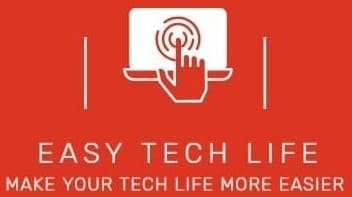
And a bezel is the frame or border that surrounds a device’s display – which you’ve probably seen on pictures of cellphones, tablets, laptops, monitors, and TVs. Sure, it offers rigidity and backing for gadgets such as cameras, microphones and sensors but modern tech typically ditches the metal bezel in favor of “bezel-less” designs that let displays take up almost 100% of the surface. But bezels do have their uses, and thinner isn’t always better.
The term bezel is a word commonly used in consumer electronics to describe the frame that surrounds ‘a display’. Similar to the frame surrounding a photo, bezels safeguard an eyeport, lend strength and contain vital parts. For years, bezels served a practical purpose and were often thick; however, in the race for ever-larger screens across the world, manufacturers like Apple, Samsung, LG and Dell started moving to slim-bezel or “bezel-less” designs.
From trimmer wraparound smartphone displays to much thinner HDTVs, bezels are shrinking – but the equilibrium between practicality, durability, and looks means the trend is less about “bigger is always better.”
What Exactly Is a Bezel?

Bezel is the physical boundaries of a device’s display. Its thickness depends on the device and design:
- Smartphones & Tablets: usually have one or more front-facing cameras, microphones, sound and ambient sensors, physical/capacitive buttons.
- Laptops: They add structural strength and accommodate webcams and microphones.
- Monitors & TVs: Frame the image, cover the edges, and add lean stability.
Thick bezels might seem old-fashioned, but they’re there to protect the phone and house stuff such as camera sensors.
What Does “Bezel-Less” Mean?

“Bezel-less” is mostly a marketing word. That’s because no device exists without bezels – they are just very, very slim, giving the impression of a screen that goes from edge to edge.
Examples:
- Apple iPhone X (2017): Boasted an edge-to-edge OLED screen, with a bigger display in a smaller body than the iPhone 8 Plus.
- Samsung Galaxy S series: Employ “Infinity Displays” with curved edges, which minimize visible side bezels.
Whereas bezel-less design means you get bigger screens without a larger device.
Benefits of Bezel-Less Devices

- Bigger is Better – 2 PACK OF Larger screens, smaller bodies: Expand your view without expanding the phone.
- Anti Eye-fatigue Technology: Comfortable to watch for a long time.
- Slim, Modern Design: Thin bezels offer a sleek, modern look.
- Efficient Space Utilization: Free the unused space around the frame with display.
Drawbacks of Bezel-Less Design

- Durability Concerns: Thinner bezels equate to less protection from drops and impacts.
- Unintentional Key Presses/Taps: Lack of border space may lead to mistaken presses or taps.
- Accessory Fit: Cases and screen protectors may not be compatible with edge to edge screens.
- Higher Prices: Designing bezel-less phones is much more difficult and the retail price is likely to increase.
In other words, more screen doesn’t necessarily mean better usability.
Bezel-Less TVs and Monitors

For TVs and computer monitors, the bezel-less approach tends to have more upsides:
- No Selfie Cameras or Buttons Necessary: TVs don’t require front-facing selfie sensors like phones.
- Immersive Experience: The ultra-thin bezel design creates a more intense experience, streaming, and multi-monitor viewing.
- Modern Aesthetics: Sleek frames complement any living space or office.
Fun fact: Projectors are as close as you can get to “true bezel-less” displays, since they project the image right onto the wall or screen.
Real-World Perspective

- Smartphones: An edge-to-edge front looks futuristic, but maybe harder to hold and more break-prone.
- Laptops: Narrow bezels make for a more portable laptop, but often mean awkward webcam placement (like the “nose cam” early Dell XPS models).
- Monitors & TVs: Basic function + aesthetics, pros outweigh the cons.
Conclusion
Bezels deliver more than just looks: they help protect, reinforce and hold everything in place. Devices become much more sleek and immersive when technology is designed with no bezel, but you may lose durability and usability.
The design that is “best” depends on what you prioritize as a user:
- Entertainment & aesthetics: Bezel-less shines.
- Practicality & Durability: A small bezel may be the more sensible choice.
FAQ
Q1: What are bezels on a laptop?
The borders around your screen on your laptop are called bezels. Thinner bezels enable larger displays in smaller casings, which are increasingly prevalent for ultrabooks.
Q2: Why do watch bezels rotate?
Rotating bezels came about in diver’s watches as a way to keep track of how much time had passed underwater. Today they’re also found in smartwatches (such as the Samsung Galaxy Watch) for scrolling and navigation.
Q3: Are bezel-less phones more fragile?
Yes. And with more glass on display and leaner frames, they are more susceptible to cracking, so protective cases are recommended.
Q4: Do bezels improve durability?
Yes. Bezels add structure, absorb shock and make room for sensors and cameras.
Q5: Are TVs truly bezel-less?
No. “Bezel-less” TVs still have ultra-thin frames. Projectors are the only source for a completely bezel-free experience.



